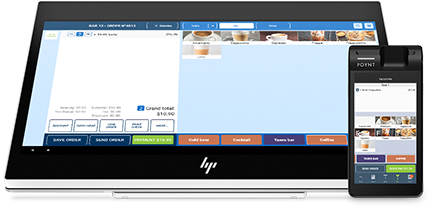How to Change from the Traditional Methods to the new POS Technology3 min read
Making the decision to switch the standard mode of operations for your business from the traditional methods to the new POS system technology may at first seem to be a dauntingly awesome challenge, however we will all someday soon begin to find that any business owners and operators who do not make the change are sadly going to be left, bottoms-up and languishing in the dust of progress.
After establishing the dire necessity for any company with a sustainable future in mind to migrate to operating from a POS system, next comes the issue that may be causing some smaller businesses to hesitate or drag their feet: the question pertaining to justifying the cost of startup, in terms of how the addition of a POS system will be able to benefit the company’s bottom line. In other words, there needs to be some more information on how to get a POS system up and running for the smaller business without it being an unreasonable expense.
While POS system technology’s widespread use is relatively new to the manner in which standard business operations are transacted, it is quickly becoming recognized by the public as the expected standard mode of operating by the most “current”or “with it” purveyors. This will eventually create a chasm between the recognizability of those businesses that choose to remain in the dark ages with the old technology and those that make the switch to POS systems.
If you find yourself among the business owners who tell others they are “just waiting to see where all the POS technology goes,” which in reality is a cover up to mask your hesitancy stemming from worries about financial practicality, there’s hope. With a little bit of planning that includes determining how your company currently operates, and your vision of where you hope your company will grow in the long term.
The truth is, you do not need to spend $5,000 $6,000, $7,000 and upwards to get a great POS system that will do everything you need it to do and more. In fact, anyone with a basic level of understanding Windows technology can do it, a piece at a time. Not every business must have a large, stand-alone system. Assembling a point of sale system is actually more doable than you may be imagining, and by doing it yourself, you will definitely save big.
To break it down for starters, a POS system is just a Windows computer with some fairly basic devices that are connected to it: a slip printer, a bar code scanner and a cash drawer, which are all connected to a regular, everyday standard Windows PC. And there’s no magical mystery in the way you interconnect all these components. They connect in the same manner as any other basic PC devices. So, to begin with, a basic system is comprised of the following components:
- One basic Windows computer which will cost somewhere between $500 to $800.
- One receipt printer. You can find the more popular models between $200 to $300, however if you will only be needing to print invoices and statements, you will be able to use a standard printer.
- A good inkjet or laser printer can be found for $100 to around $150.00, which you will use for printing invoices, statements, reports, price tags, barcode labels and any other incidentals.
- A cash drawer (needs to be automatic,) for between $100 and $150.
- A barcode scanner, which will run around $100 for a basic device, and around $200 for a laser scanner. Simply connect it to a USB port, with nothing else required.



